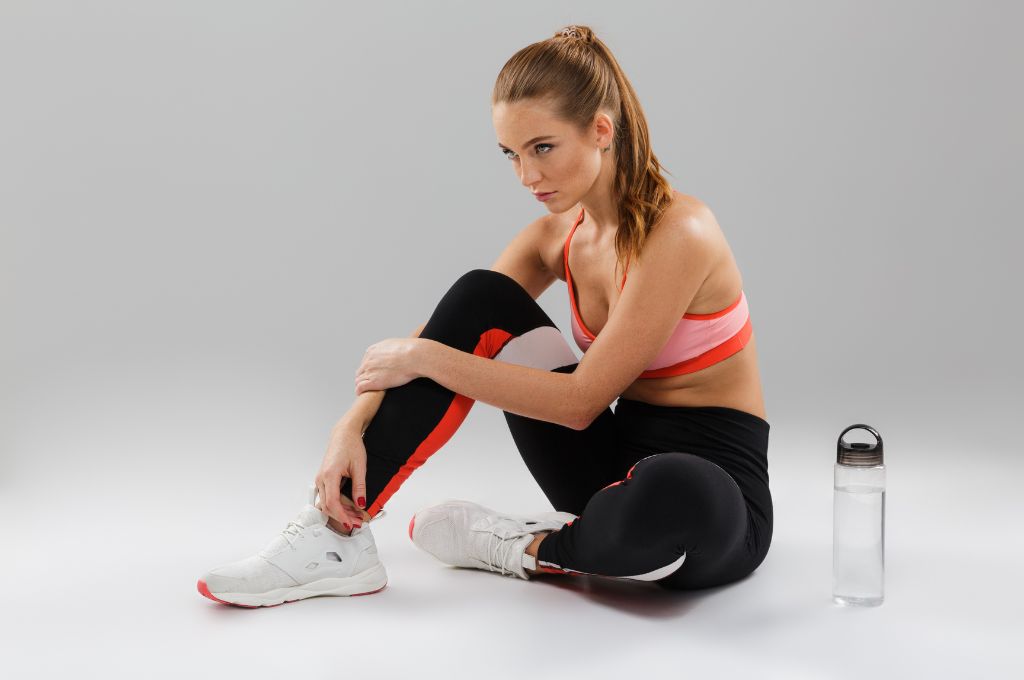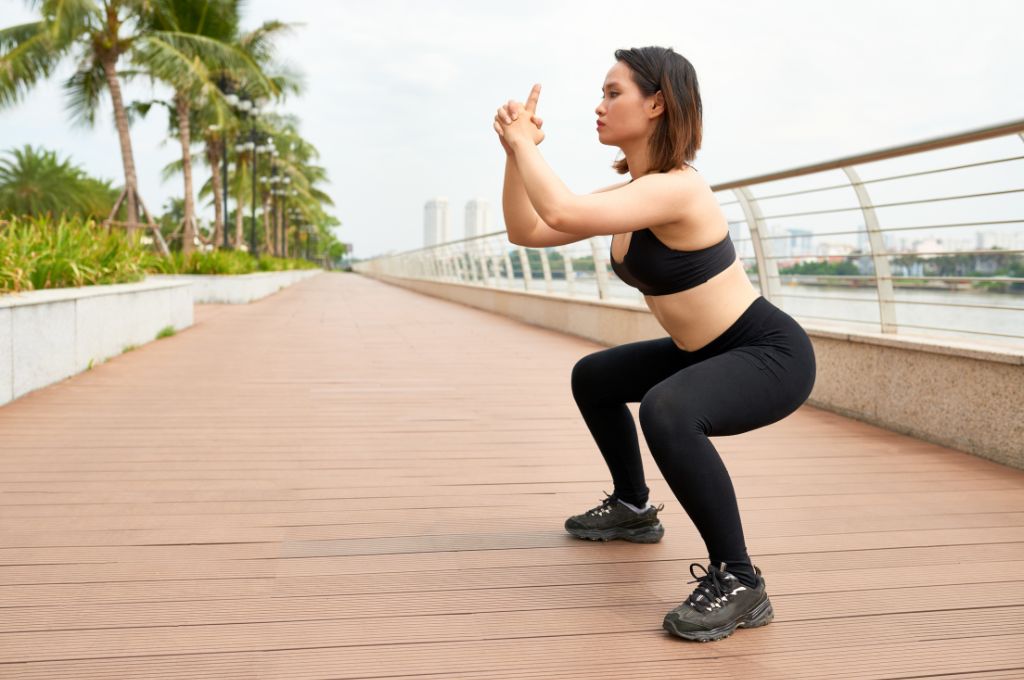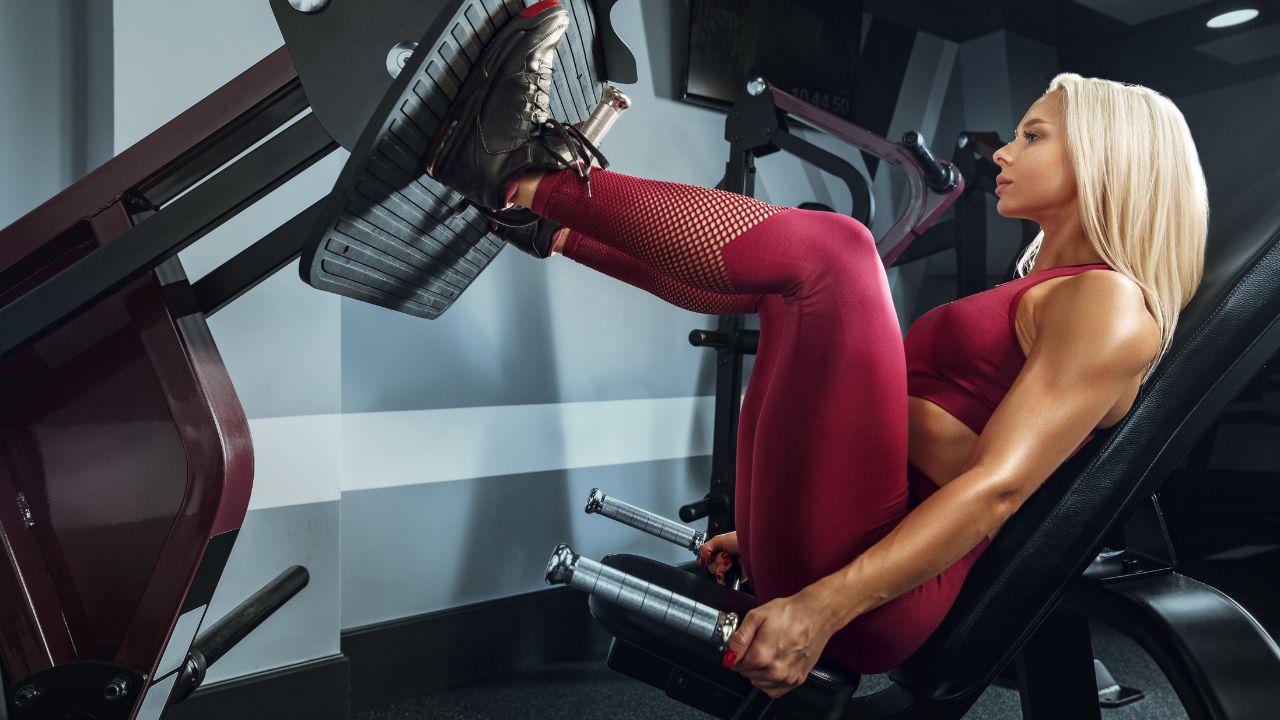Discover the reasons behind knee shaking during squats and learn how to overcome this challenge for a more robust, confident workout.
Understanding the Phenomenon
Have you ever felt your knees trembling like a leaf in the wind when you’re doing a squat? It’s a common occurrence that perplexes even the most experienced gym-goers. Why do my knees shake when I squat? This question echoes through the minds of many fitness enthusiasts, and the answer lies in understanding the intricate workings of our bodies during this fundamental exercise.
When you perform a squat, multiple muscle groups come into play, including your quadriceps, hamstrings, glutes, and calves. These muscles work in harmony to stabilize your body and control the movement. However, when your knees start to shake, it’s often a sign that something isn’t quite right in this intricate balance.
Muscle Fatigue and Overexertion
One of the primary culprits behind shaky knees during squats is muscle fatigue. Your muscles begin to tire out as you repeatedly perform squats, especially with heavier weights or higher repetitions. Muscle fatigue can compromise your form and stability, leading to shaky knees as your body struggles to maintain control.
Additionally, overexertion can exacerbate this issue. Pushing yourself beyond your limits without proper rest and recovery can strain your muscles, making them more prone to shaking and trembling during exercises like squats. It’s essential to listen to your body and give it the rest it needs to recuperate between intense workout sessions.
Weakness in Stabilizing Muscles
Another common reason for knee shaking during squats is weakness in the stabilizing muscles around the knees and hips. While your major muscle groups may be strong, weak stabilizers can throw off your balance and cause instability during squatting.
The quadriceps, hamstrings, and glutes may get most of the attention during squats, but the smaller stabilizing muscles play a crucial role in supporting these larger muscle groups. Neglecting to strengthen these stabilizers through targeted exercises can leave your knees vulnerable to shaking and trembling when under pressure.
Lack of Proper Warm-Up
Proper preparation is critical to a successful squatting session, and a lack of adequate warm-up can contribute to knee shaking. With proper warm-up, your muscles may be adequately primed for the demands of squatting, increasing the likelihood of instability and trembling.
Warm-up exercises that target the muscles involved in squats, such as leg swings, lunges, and bodyweight squats, can help increase blood flow, improve flexibility, and activate the muscles you’ll be using during your workout. Incorporating dynamic stretches and mobility drills into your warm-up routine can further enhance your squatting performance and reduce the risk of knee shaking.
Imbalance or Misalignment
Knee shaking during squats can also indicate underlying imbalances or misalignments in the body. These issues can throw off biomechanics, leading to instability and discomfort during exercises like squats. Common contributors to imbalances and misalignments include muscular asymmetry, poor posture, and previous injuries.
Addressing these imbalances through targeted corrective exercises, stretching, and mobility work can help realign your body and improve your squatting technique. Consulting with a qualified fitness professional or physical therapist can provide valuable insights into your specific imbalances and tailor a plan to address them effectively.
Mental Factors and Confidence
Believe it or not, the mind plays a significant role in physical performance, including during squats. Mental factors such as fear, anxiety, or lack of confidence can manifest physically as shaky knees and compromised form. If you approach squats with hesitation or self-doubt, your body may respond accordingly, leading to instability and trembling.
Building confidence in your squatting abilities requires a combination of practice, positive reinforcement, and mental conditioning. Visualization techniques, positive affirmations, and focusing on past successes can help bolster your confidence and quiet the doubts contributing to knee shaking. Trust in your abilities and approach each squat with determination and conviction.
Breathing Technique
Proper breathing technique is often overlooked but crucial for maintaining stability and control during squats. Inadequate breathing can lead to muscle tension and a lack of oxygen delivery, increasing the likelihood of knee shaking and diminished performance.
During squats, focus on breathing deeply and rhythmically, inhaling as you lower into the squat and exhaling as you rise back up. This controlled breathing pattern helps stabilize your core, engage your diaphragm, and provide the necessary oxygen to your muscles. Practice mindful breathing during squats to enhance control and reduce knee shaking.
Core Strength and Activation
A solid and engaged core is essential for maintaining proper form and stability during squats. Weak core muscles can lead to compensatory movements and instability, resulting in shaky knees and compromised technique.
Incorporate core-strengthening exercises into your routine, such as planks, Russian twists, and leg raises, to improve overall stability and support during squats. Focus on maintaining a braced core throughout the squatting motion, engaging your abdominals, obliques, and lower back to provide a solid foundation for the exercise.
Foot Placement and Alignment
The position of your feet during squats can significantly impact your stability and knee alignment. Incorrect foot placement or alignment can place undue stress on the knees and contribute to shaking and discomfort.
Ensure your feet are shoulder-width apart and evenly distribute your weight across the entire foot, with your toes pointed slightly outward. This stance helps activate the lower body muscles more effectively and promotes proper alignment throughout the squatting motion. Please pay attention to the alignment of your knees, ensuring they track in line with your toes to reduce strain and instability.
Equipment and Gear
The equipment and gear you use during squats can influence your knee stability and performance. Inadequate footwear or improper gear can contribute to poor form, discomfort, and increased risk of knee shaking.
Invest in a pair of quality, supportive shoes designed for weightlifting or squats to provide optimal stability and cushioning. Additionally, consider using supportive accessories such as knee sleeves or wraps to offer extra knee support and compression during heavy lifting. Proper equipment can enhance your comfort and confidence during squats, reducing the likelihood of knee shaking.
Environmental Factors
Environmental factors like temperature, humidity, and even the exercise surface can affect your squatting performance and knee stability. Unfavorable conditions can make maintaining proper form and control harder, increasing the risk of shaking and discomfort.
Ensure you exercise in a comfortable environment with adequate ventilation and temperature control. If you squat on an unstable or slippery surface, consider using a mat or switching to a more stable platform to improve traction and stability. Pay attention to your surroundings and adjust to optimize your squatting experience.
Hydration and Nutrition
Proper hydration and nutrition are essential for optimal muscle function and performance during squats. Dehydration can impair muscle contraction and coordination, increasing the likelihood of fatigue and shaking during exercise.
Drink plenty of water throughout the day, especially before and during your workout, to stay hydrated and support muscle function. Additionally, fuel your body with a balanced diet of protein, carbohydrates, and healthy fats to provide the energy and nutrients needed for intense physical activity. Proper hydration and nutrition can help sustain your strength and stability during squats, reducing the risk of knee shaking.
Recovery and Rest
Rest and recovery are just as important as exercise in maximizing performance and minimizing knee shaking during squats. Inadequate rest can lead to overtraining, muscle fatigue, and increased susceptibility to injury.
Incorporate rest days into your workout schedule to allow your muscles time to repair and rebuild. Focus on quality sleep, stress management, and relaxation techniques to promote overall recovery and well-being. By prioritizing rest and recovery, you’ll set the stage for more productive and stable squatting sessions with reduced knee shaking.
Gradual Progression and Technique

Rome was built a day ago, and neither is a robust and stable squat. Gradual progression and consistent technique refinement are essential for building strength and stability while minimizing knee shaking.
Start with lighter weights and master proper squatting before gradually increasing the intensity or resistance. Pay attention to your form throughout each repetition, ensuring that your knees track in line with your toes, your back remains straight, and your core stays engaged. By prioritizing technique and gradual progression, you’ll build a solid foundation for squatting success with minimal knee shaking.
Stretching and Mobility Work
Flexibility and mobility play a crucial role in squatting performance and knee stability. Tight muscles can restrict the range of motion and compromise form, increasing the likelihood of knee shaking and discomfort.
Incorporate dynamic stretching and mobility exercises into your warm-up routine to loosen tight muscles and improve flexibility. Target the hips, hamstrings, and ankles to optimize your squatting mechanics and reduce knee strain. Additionally, consider incorporating foam rolling and self-myofascial release techniques to alleviate tension and improve tissue quality. By prioritizing stretching and mobility work, you’ll enhance your squatting performance and minimize knee shaking.
Mind-Body Connection
Developing a solid mind-body connection is essential for maximizing performance and minimizing knee shaking during squats. Mindfulness techniques such as focused breathing, visualization, and proprioceptive awareness can help you tune into your body’s signals and optimize movement patterns.
Practice mindfulness during squats, paying attention to how each movement feels and adjusting to maintain stability and control. Visualize yourself performing the squat with perfect form and confidence, reinforcing positive neural pathways and reducing anxiety or hesitation. By cultivating a strong mind-body connection, you’ll enhance your squatting performance and minimize knee shaking with greater ease and efficiency.
Professional Guidance and Support
Feel free to seek professional guidance and support if you struggle with persistent knee shaking during squats despite your best efforts. A qualified fitness trainer, physical therapist, or sports medicine specialist can provide valuable insights into your unique biomechanics and movement patterns, helping you identify and address the root causes of knee shaking.
Work with a professional to develop a personalized exercise program tailored to your needs and goals, incorporating corrective exercises, mobility drills, and strength training techniques to improve stability and reduce knee shaking. Additionally, seek guidance on proper squatting technique and form to exercise safely and effectively. With expert support and advice, you can overcome knee shaking and achieve greater confidence and success in your squatting endeavors.
Psychological Factors and Mindset
The psychological aspect of knee shaking during squats should not be underestimated. Negative self-talk, performance anxiety, and fear of failure can all contribute to shaky knees and diminished performance.
Cultivate a positive mindset and approach your squats with confidence and self-assurance. Replace negative thoughts with positive affirmations and focus on your strengths and accomplishments rather than dwelling on perceived weaknesses or shortcomings. Visualize yourself succeeding in your squats, feeling strong, stable, and in control. Adopting a positive mindset and reframing your thoughts will reduce anxiety and hesitation, leading to more confident and stable squats with minimal knee shaking.
Supportive Community and Accountability
Surrounding yourself with a supportive community can provide invaluable encouragement, motivation, and accountability on your fitness journey. Connect with like-minded individuals who share your passion for health and wellness, whether it’s through online forums, social media groups, or local fitness communities.
Share your struggles and triumphs with others, seeking advice, encouragement, and accountability when needed. Having a supportive network to lean on can help alleviate feelings of isolation or self-doubt and provide the motivation and inspiration to push through challenges such as knee shaking during squats. Together, you can celebrate victories, overcome obstacles, and strive to improve your squatting performance.
Lifestyle Factors and Habits
It is essential to consider how lifestyle factors and habits may contribute to knee shaking during squats. Stress, poor sleep, and inadequate nutrition can all impact your physical and mental well-being, affecting your ability to perform squats with stability and confidence.
Take a holistic approach to your health and wellness, prioritizing habits that support optimal performance and recovery—practice stress management techniques such as meditation, yoga, or journaling to reduce tension and promote relaxation. Ensure you get enough sleep each night to support muscle repair and regeneration. And fuel your body with nutritious foods that provide the energy and nutrients needed for peak performance. Addressing lifestyle factors and habits will create a solid foundation for stable, confident squats with minimal knee shaking.
Listening to Your Body
Above all else, listening to your body and honoring its signals during squats is crucial. If your knees are shaking or you’re experiencing discomfort or pain, taking a step back and assessing what might be causing these issues is essential.
Avoid pushing through pain or discomfort, leading to injury and further setbacks. Instead, modify your workout as needed, reduce the intensity or weight, or focus on exercises that don’t exacerbate your symptoms. Trust your instincts and prioritize your long-term health and well-being over short-term gains. By listening to your body and responding appropriately, you’ll minimize the risk of knee shaking and promote safer, more sustainable progress in your fitness journey.
Setting Realistic Goals
Setting realistic and achievable goals is essential for maintaining motivation and momentum in your fitness journey. Goal-setting allows you to establish clear objectives and milestones to work towards, providing direction and purpose to your workouts.
Break down your larger fitness goals into smaller, manageable tasks, such as increasing your squat weight by a certain amount or improving your form and stability. Track your progress over time and celebrate each milestone, no matter how small. By setting realistic goals and staying focused on your progress, you’ll stay motivated and committed to overcoming challenges like knee shaking during squats.
Consistency and Persistence
Consistency is vital in overcoming knee shaking during squats and achieving your fitness goals. Consistent effort and dedication to your workouts will yield results over time, even in the face of setbacks or challenges.
Make exercise a regular part of your routine, schedule regular workouts, and stick to them as much as possible. Even when you don’t feel motivated or energized, showing up and putting in the effort will keep you moving toward your goals. Embrace the process and trust that your consistent actions will lead to progress and improvement over time. With persistence and determination, you’ll conquer knee shaking and achieve greater strength and stability in your squats.
Celebrating Progress and Success
Remember to celebrate your progress and success along the way. Acknowledging your achievements and milestones, no matter how small boosts confidence and reinforces your commitment to your fitness journey.
Whether it’s hitting a new personal best in your squat, mastering a challenging variation, or simply showing up and giving it your all, take the time to celebrate your accomplishments. Treat yourself to something special, share your success with friends or family, or bask in knowing you’re making meaningful strides toward your goals. Celebrating your progress and success will motivate you to continue pushing past obstacles like knee shaking and reaching new heights in your fitness journey.
Conclusion
In conclusion, knee shaking during squats can be frustrating and perplexing, but it’s not insurmountable. By understanding the various factors contributing to knee shaking and implementing strategies to address them, you can enhance your stability, confidence, and performance in squats.
From strengthening, stabilizing muscles, and improving technique to addressing psychological factors and lifestyle habits, there are numerous approaches to minimizing knee shaking and maximizing your squatting potential. Remember to listen to your body, set realistic goals, and stay consistent and persistent. With patience, dedication, and a willingness to learn and adapt, you can conquer knee shaking and unlock the full benefits of squats for a more robust, fitter, and resilient body.




